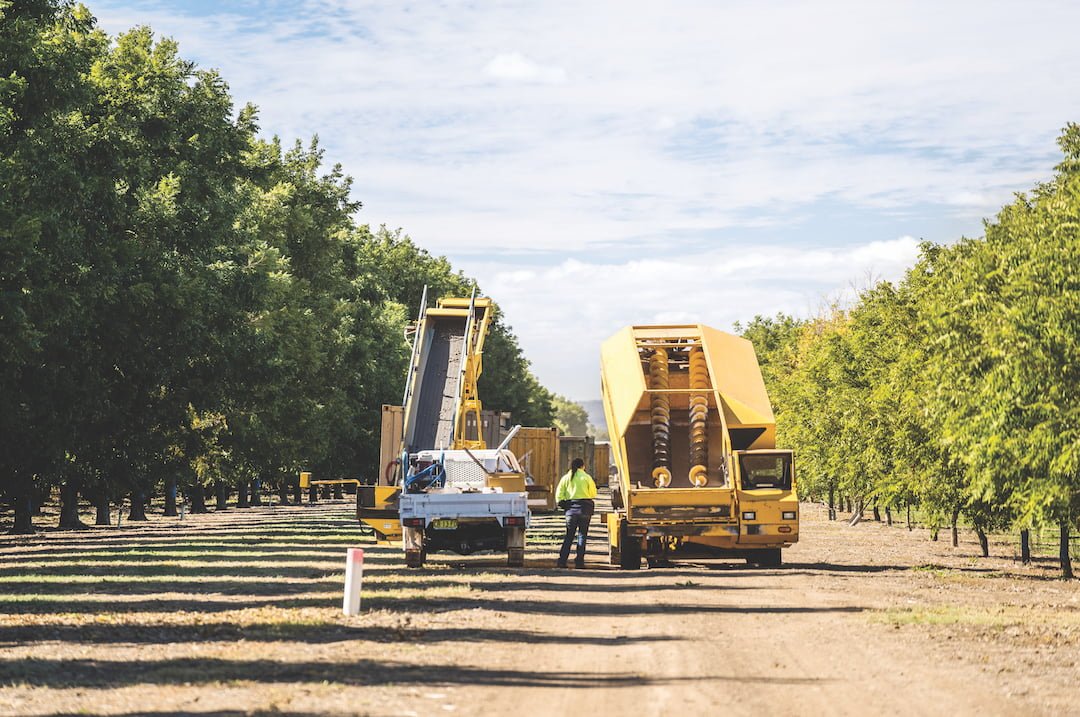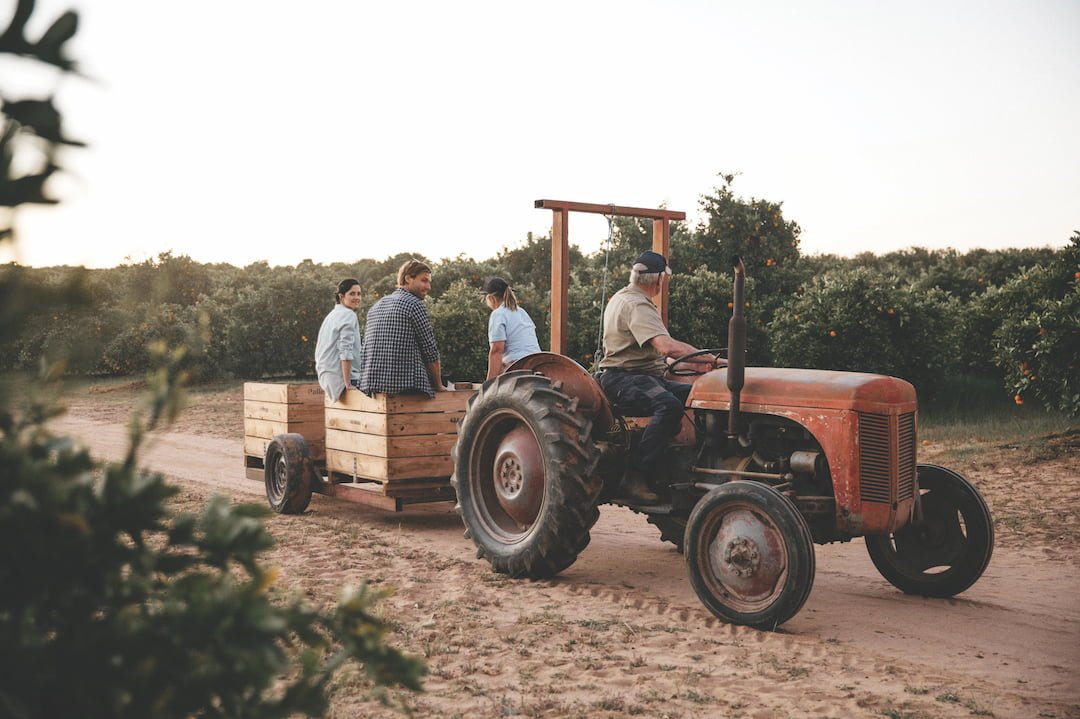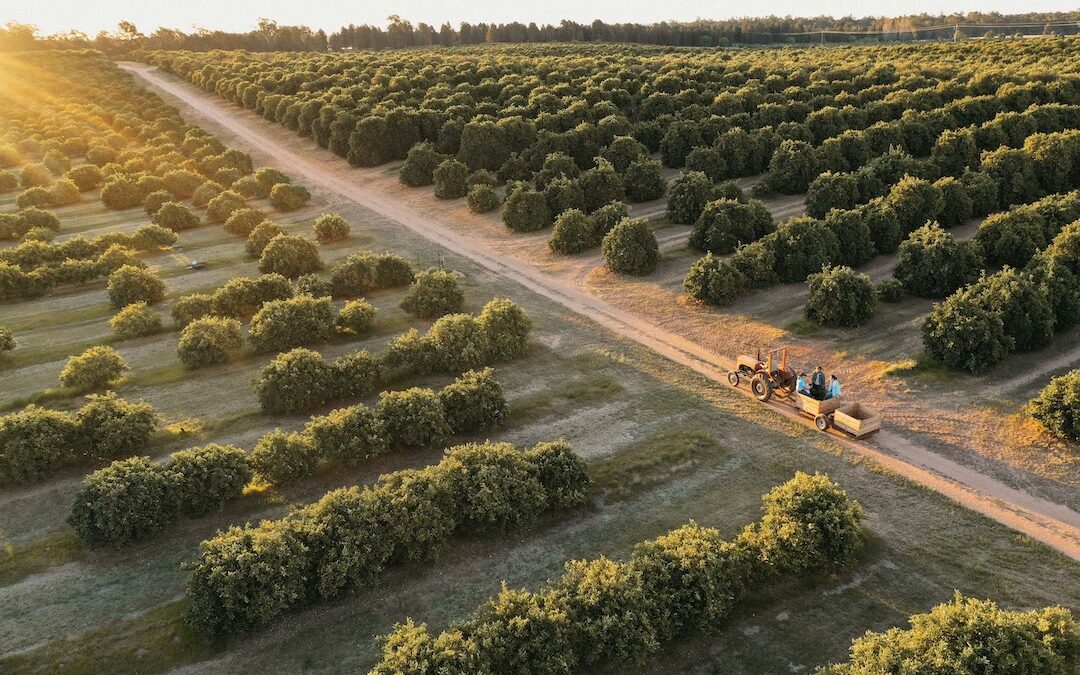Meet the farmers who Work for peanuts…well, pistachios, walnuts and hazelnuts.
Rising input costs. Price gouging by supermarkets. Vegan protestors and the worst drought in living memory. Farmers in Australia have never had it so tough, with more than one in four saying they are likely to exit the sector, according to the University of Canberra’s latest Regional Wellbeing Survey. Vignerons topped the list, followed by fruit, vegetable and rice growers.
But in any market, there are winners and losers. And in this case, the winners are totally nuts. Since 2011, the annual farm gate value of our nut industry has nearly quadrupled to $1.3 billion. These stats came from the Australian Nut Industry Council, and it’s showing no signs of slowing down. By 2030, it’s projected to hit $3 billion.

“The whole industry is booming and the reason is pretty straightforward – the plant-based food trend,” says Jolyon Burnett, CEO of the Australian Macadamia Society. “Whether it’s paleo, gluten-free or vegan, nuts pretty much tick every box. The health benefits of eating nuts are getting better documented all the time. Ten years ago, 70 per cent of Australian GPs said they didn’t consider nuts “healthy” because they made you fat. Today, that figure has flipped on its head. Now 70 per cent of GPs recommend nuts as part of a healthy diet.”
So is growing nuts commercially a walk in the park? To find out, Ausbiz speaks with three farmers growing three different nuts in three different states.
South Australian pistachios
“I have a great deal of sympathy for any farmer doing it tough because us nut farmers are growing something the whole world wants to eat. We can’t keep up with supply,” says Chris Joyce, director of Nut Producers Australia. Joyce looks after the country’s biggest pistachio grower in the Riverland region of South Australia.
But the cost of establishing a nut farm is a major disincentive, Joyce explains. “Pistachio trees need six years to mature, which means you need deep pockets and to find a way to feed your family for at least five years. In the sixth year, you just cover your costs.”
Birds – and figuring out how to scare them – pose another challenge for nut farmers. “There are a variety of scaring techniques: guns, cannons, sound recordings, though the big orchards use light aircraft,” Joyce says. “At a minimum, you need one person working four hours a day to protect 20 to 30 hectares of nut trees. That means you can’t grow nuts commercially on a hobby farm because the costs of scaring birds make the whole thing unfeasible.”
There are currently about 1000 hectares of pistachio trees planted in Australia and another 1200 hectares of immature trees in the ground – with all additionaloutput slated for China. “Right now about 45 per cent of all Australian pistachios go to China and that’s a result of two things,” Joyce says. “The hard work done by our industry to have all tariffs for our nuts abolished and Trump’s trade war. China has slapped tariffs of 40 to 50 per cent on nuts from the US, which is our main competitor. So you can guess who’s become China’s favourite origin for nuts.”

Victorian walnuts
Philip Farnell didn’t do much research before he bought Wellwood Wallace; a 60-hectare walnut farm near the Victorian city of Ballarat, in 2014. “I just fell in love with the place,” he says.
Fortunately for Farnell, the gambit paid off. As one of only two Australian Certified Organic walnut growers in the country, his produce sells for four or five times the price of regular walnuts – and will continue to track north. “If you look at the prices of other nutritious health foods, walnuts are more affordable given their high concentrations of the vitamins omega-3 and omega-6,” he says. “Comparatively speaking, walnuts are still too cheap.”
In this robust market, one would think Farnell is laughing all the way to the bank. But that’s not the case, he explains: “Walnut trees are very thirsty. The cost of water today is about $850 per megalitre and climbing. It’s a major drawback, as are equipment costs.
“You need very dedicated machinery for shaking and harvesting trees that can’t be used for any other crop. We’re also about to invest $375,000 in a computerised irrigation system that reads moisture levels in the soil. It’s a huge amount of money but it’ll save me a huge amount of time.”
Farnell’s advice for anyone thinking about investing in a walnut farm? “You need to do your research and not jump into it like I did,” he says. “I wish I’d known more about what a big investment it would be and that the returns, even on an existing farm, would be spread over 20 years. I don’t regret buying – it’s a beautiful lifestyle – but I’ve had to forget about early retirement.”

Tasmanian hazelnuts
Australian hazelnuts are so much fresher and tastier than the imported varietals sold in supermarkets that most growers have never seriously contemplated exporting. “The market is booming now that hazelnuts are seen as an alternative protein source that’s both cheaper and healthier than meat,” says Carol Bracken of Tamar Valley Hazelnuts, a farm in northeast Tasmania with 5000 trees. “So we don’t have to accept global prices.”
But will the bottom drop out of the domestic market when the million hazelnut trees planted by confectionery company Ferrero Australia in the Riverina region of NSW begin bearing fruit this year?
Bracken thinks not: “Ferrero won’t be selling their hazelnuts in Australia. They will crack them open here and ship them overseas to their processing plants, then ship some of the hazelnut meal back to their Nutella factory in Lithgow. It’s complicated, you see.”
Tamar Valley Hazelnuts sell through their virtual and online farm gate store, and to retailers in Tasmania and Victoria. Business has been good but they have grown tired of the work and are looking for an exit.
“We’ve invested quite a lot to build it up to a successful business,” Bracken says, “but the property needs more investment in processing, more irrigation and more trees. We’ve been at it for 10 years and are ready for a change. So if you’re interested, let me know – we’re putting it up for sale.”
DID YOU KNOW?
People who eat nuts every day reduce their mortality by 20 per cent, according to the Harvard Medical School. And, peanuts are actually legumes, not nuts. They can be eaten safely by expectant mothers.
Read more: Smart Farms: a $22 billion opportunity

